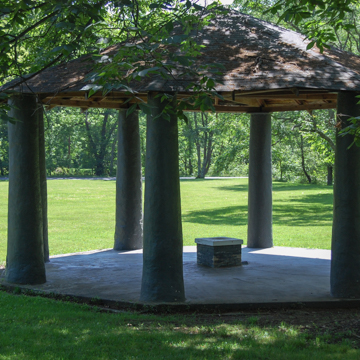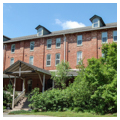Native Americans recognized the healing value of the waters on this site long before Europeans settled the area. The spring was included in the land grant of 1735 to John Littler and then changed ownership several times until 1834, when Branch Jordan constructed a hotel on the site. The hotel building was replaced in 1855 with one that was later used as a Civil War hospital. The present twelve-bay, three-and-a-half-story brick building, constructed by Clarendon Jordan, great-nephew of Branch Jordan, is the third hotel on the site. Behind its off-center pedimented entrance, the L-shaped building has a wrap-around porch sheltering the first floor. The spring located north of the hotel is marked by an octagonal pavilion with Doric supports and a conical roof.
An elegant resort during the nineteenth century, Jordan's White Sulphur Springs attracted visitors who arrived by railroad from Baltimore, New York, Philadelphia, and Washington, D.C. Since it closed as a resort in 1916, the hotel building has been used as an anticommunist school in the early 1950s, a Catholic seminary for training priests in the 1950s and 1960s, a private treatment center for teenagers with substance abuse problems in the 1970s and 1980s, and is now a wedding, event, and conference center. The hotel retains much of its Victorian-era appearance.



















